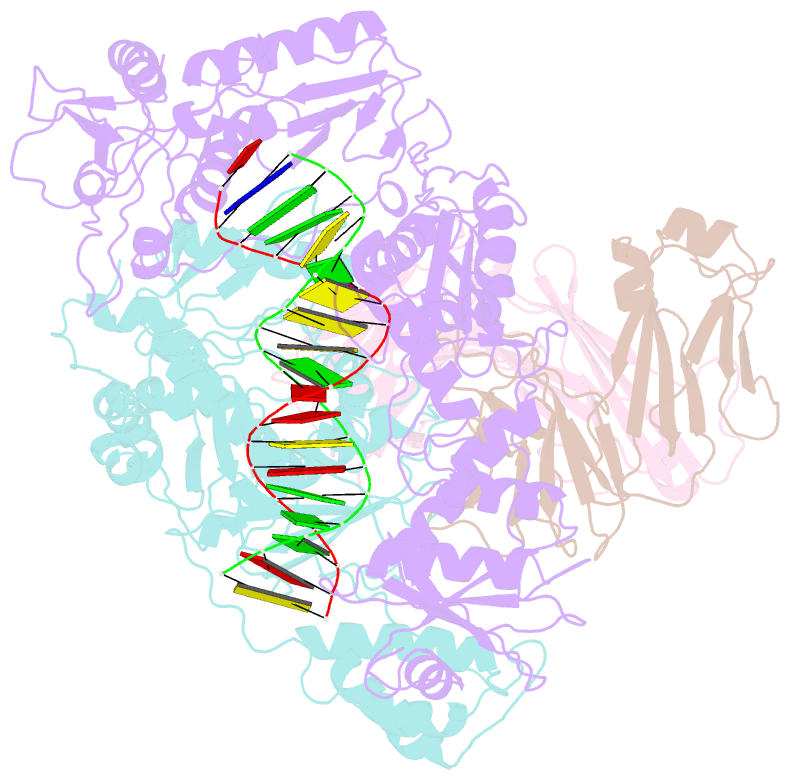Summary information and primary citation
- PDB-id
- 1j5o; SNAP-derived features in text and JSON formats;
DNAproDB
- Class
- transferase-immune system-DNA
- Method
- X-ray (3.5 Å)
- Summary
- Crystal structure of met184ile mutant of hiv-1 reverse transcriptase in complex with double stranded DNA template-primer
- Reference
- Sarafianos SG, Das K, Clark Jr AD, Ding J, Boyer PL, Hughes SH, Arnold E (1999): "Lamivudine (3TC) resistance in HIV-1 reverse transcriptase involves steric hindrance with beta-branched amino acids." Proc.Natl.Acad.Sci.USA, 96, 10027-10032. doi: 10.1073/pnas.96.18.10027.
- Abstract
- An important component of triple-drug anti-AIDS therapy is 2', 3'-dideoxy-3'-thiacytidine (3TC, lamivudine). Single mutations at residue 184 of the reverse transcriptase (RT) in HIV cause high-level resistance to 3TC and contribute to the failure of anti-AIDS combination therapy. We have determined crystal structures of the 3TC-resistant mutant HIV-1 RT (M184I) in both the presence and absence of a DNA/DNA template-primer. In the absence of a DNA substrate, the wild-type and mutant structures are very similar. However, comparison of crystal structures of M184I mutant and wild-type HIV-1 RT with and without DNA reveals repositioning of the template-primer in the M184I/DNA binary complex and other smaller changes in residues in the dNTP-binding site. On the basis of these structural results, we developed a model that explains the ability of the 3TC-resistant mutant M184I to incorporate dNTPs but not the nucleotide analog 3TCTP. In this model, steric hindrance is expected for NRTIs with beta- or L- ring configurations, as with the enantiomer of 3TC that is used in therapy. Steric conflict between the oxathiolane ring of 3TCTP and the side chain of beta-branched amino acids (Val, Ile, Thr) at position 184 perturbs inhibitor binding, leading to a reduction in incorporation of the analog. The model can also explain the 3TC resistance of analogous hepatitis B polymerase mutants. Repositioning of the template-primer as observed in the binary complex (M184I/DNA) may also occur in the catalytic ternary complex (M184I/DNA/3TCTP) and contribute to 3TC resistance by interfering with the formation of a catalytically competent closed complex.





